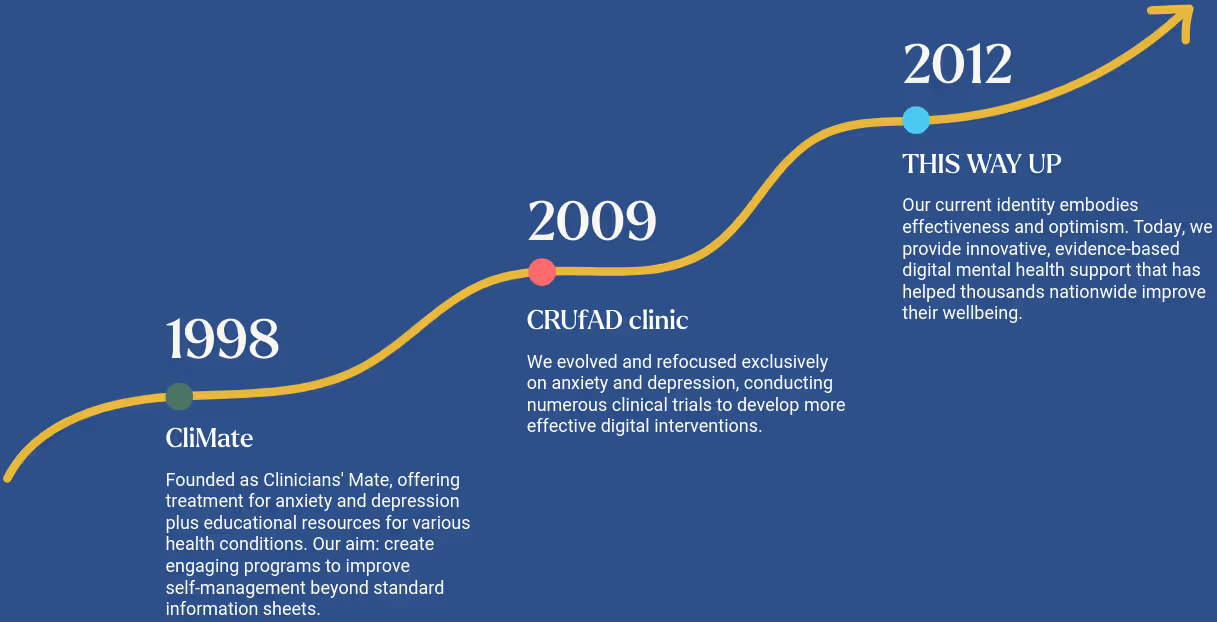Panic Attacks Explained
What is Panic Disorder?
Characterised by a surge of intense and sudden anxiety, panic attacks are terrifying. They can be triggered by frightening experiences, like being stuck in an elevator, or they can come out of the blue. Many people will have a panic attack at least once in their life, in response to a clear trigger. Some people, however, have unexpected panic attacks over and over.
People with panic disorder have recurring, unexpected panic attacks, worry about having more panic attacks, and take steps to try and prevent them from happening again. Panic attacks are relatively common; it’s the fear of having more panic attacks that defines panic disorder.
Sometimes, the steps people take to prevent panic attacks are more harmful than helpful. They can range from constantly having a water bottle with you just in case you need it, to taking addictive, sedative medications to prevent a panic attack from happening.
People with panic disorder also tend to avoid situations and activities where they might have a panic attack. Some common examples of this include driving, crowded places, public transport, physical exercise, small spaces, and wide, open spaces.
Every now and then, people’s avoidance of these kinds of situations can become so intense that they develop agoraphobia. Agoraphobia is intense fear and avoidance of situations where people feel like they won’t be able to easily escape or get help if they panic, like elevators, unfamiliar places, or crowded concerts. People with severe agoraphobia can feel too anxious to leave their house.

Not sure whether to seek help?
If you’re unsure about the way you feel, take our anonymous online Wellbeing Test to check whether your levels of stress, anxiety, or depression are within a healthy range, and see if one of our online programs could help.
What causes panic attacks and panic disorder?
Panic attacks are triggered by the fight-or-flight response, the body’s natural reaction to a perceived threat. This response is supposed to help us fight or escape dangerous situations. In prehistoric times, this threat might have been something like a bear or a tiger. Today however, we’re more often threatened by things like financial stress, public speaking, or even the thought of another panic attack.
When the fight-or-flight response is triggered, it causes changes in the body, like increased heart rate, sweating, and quick, shallow breathing. These reactions would be helpful if you needed to escape a life-threatening situation. Most of the time, however, they just feel terrifying.
Because panic attacks are so frightening, people start to avoid situations where they could have a panic attack, and try to do things that make them feel safer, like always having a mobile phone in case they need help. Although these behaviours reduce anxiety in the short-term, they actually reinforce people’s fear of panic attacks, resulting in panic disorder.
How can I deal with panic disorder?
Panic disorder is a very treatable condition. People with panic disorder benefit greatly from psychoeducation and Cognitive Behavioural Therapy (CBT). In rare situations, medications can also be used.
Psychoeducation
Psychoeducation refers to learning about what panic attacks are and how panic disorder works. Psychoeducation is very important in treating panic disorder. It can help people recognise when they are having a panic attack, which can, in turn, counter fears of dying, losing control, or ‘going crazy’. This can give people a greater sense of control of their physical and mental health, thereby improving their wellbeing. Providing education for families or carers also helps them offer support.
The most important pieces of information for a person with panic disorder are:
- Panic attacks are very common.
- Panic attacks are not a sign of weakness.
- No one has ever died or gone insane from having a panic attack.
- The fight-or-flight response is a harmless and natural biological process.
- Panic disorder responds well to treatment.
- Recovery is the rule, not the exception.
Cognitive Behavioural Therapy (CBT)
CBT is a very effective treatment for panic disorder. CBT can help people to:
- Identify when they are having a panic attack (rather than something more serious, like a heart attack or psychotic breakdown).
- Tolerate unpleasant physical panic symptoms.
- Overcome the fear of having more panic attacks.
- Re-engage in or start new activities that you might have been avoiding because of anxiety.
CBT will often be recommended when:
- The person has found CBT helpful in the past.
- The person wants to take an active role in their recovery.
- The person wants to learn skills to help them get well and stay well.
- A competent, trained clinician who has expertise in CBT is available, or the person is prepared to use internet CBT (iCBT).
- The person prefers CBT or iCBT.
Medications
Psychiatric medications are not generally recommended for the treatment of panic disorder. This is because some psychiatric medications can dampen panic symptoms, while treatment for panic disorder generally involves learning to tolerate these symptoms. In other words, it’s difficult to overcome your fears without facing them. However, people who have panic attacks alongside other mental health issues, like depression or social anxiety, may benefit from antidepressants.

How can Cognitive Behavioural Therapy (CBT) help with panic disorder?
Cognitive Behavioural Therapy or CBT is considered to be one of the leading psychological treatments for panic attacks. All of our online programs use CBT strategies to help ease symptoms of panic disorder. Click below to see if CBT can help you tackle your symptoms to improve the way you feel.
How can I cope with the symptoms of panic disorder?
Deep breathing
- To calm feelings of panic, breathe in through your nose for 3 seconds, and out for at least 3 seconds.
- As you breathe, focus on your breath. Notice how it feels in your nose, throat, chest, and stomach. As you breathe out, notice any tension leaving your body.
- Repeat for at least 3 minutes, or until you feel calmer.
Shifting your attention
People with panic disorder tend to focus on their bodies, so that they can be on the ‘lookout’ for panic attack symptoms.
- Try to notice when you’re focusing your attention on your body
- When you do, remind yourself that panic symptoms aren’t dangerous
- Then, shift your attention to something else around you
Shifting unpleasant thoughts and emotions
People with panic disorder can overestimate the likelihood of bad things happening and underestimate their ability to cope. A number of strategies may help you achieve a more balanced view of things:
- Make a list of your three best strengths - perhaps with the help of a friend or relative. Carry the list with you and read it to yourself whenever you find yourself focusing on negative thoughts.
- Make a list of three difficult things that you coped with better than you expected yourself to. Read this list when you find yourself worrying about how you’d cope if these worries came true.
- Make a list of three times that you’ve had panic attacks and come out okay on the other side!



